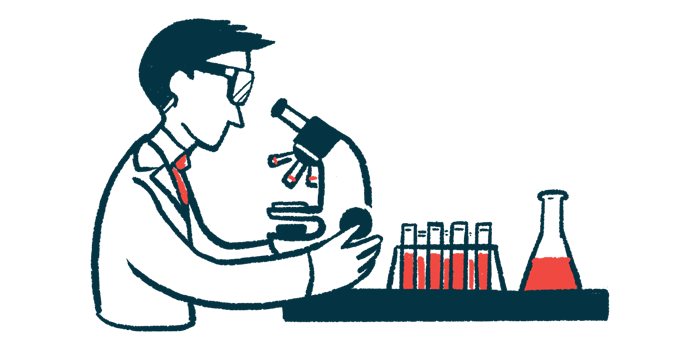Test for Cushing’s still performs well with limited measurements
New Reflex protocol also shown to reduce cost, unnecessary tests

Limiting the number of measurements in the low-dose overnight dexamethasone suppression test (oDST), which is commonly used to diagnose Cushing’s syndrome, does not affect the test’s performance, a study showed.
A new protocol, called Reflex, performs additional tests only among people whose initial tests suggest the presence of Cushing’s. It was also shown to reduce unnecessary tests and associated costs.
“We demonstrated that the implementation of the Reflex protocol avoided unnecessary … measurements without affecting test performance, highlighting its utility from both a resource and cost standpoint,” researchers wrote.
The study, “The Reflex Dexamethasone Suppression Test: Development and Assessment of Reflexed Serum Dexamethasone Measurement for the Diagnosis of Cushing Syndrome,” was published in AACE Endocrinology and Diabetes.
Low-dose oDST a first-line diagnostic test for Cushing’s
Cushing’s syndrome is a broad term for a group of conditions marked by hypercortisolism, or abnormally high levels of the stress hormone cortisol. Endogenous Cushing’s comprises forms caused by the body’s excess production of cortisol.
Cushing’s disease, the most common form of endogenous Cushing’s syndrome, is caused by tumors in the brain’s pituitary gland, which secretes adrenocorticotropic hormone (ACTH). This hormone, in turn, stimulates the adrenal glands, which sit atop the kidneys, to produce cortisol.
Ectopic Cushing’s, another form of endogenous Cushing’s, is caused by ACTH-producing tumors outside the pituitary gland. In some cases, the adrenal glands themselves produce excess cortisol, regardless of ACTH levels, primarily due to adrenal tumors.
One of the first-line diagnostic tests for endogenous Cushing’s syndrome is a low-dose oDST. Here, a person takes 1 mg of dexamethasone, a medication that mimics cortisol in the body, late in the evening, and their blood is tested for cortisol the next morning.
Administration of dexamethasone suppresses the production of cortisol in healthy people, but has no effect on cortisol levels in people with endogenous Cushing’s.
However, oDST is not perfect, and false-positive results can occur. Therefore, the blood levels of dexamethasone can be also measured in the morning sample to ensure that the dexamethasone dose taken at night was effectively absorbed by the body.
Test performance before and after Reflex evaluated
To reduce unnecessary and costly dexamethasone measurements, the Medical College of Wisconsin implemented a new protocol, called Reflex, in 2023. In this protocol, dexamethasone was measured in blood only if post-oDST cortisol levels were at least 1.6 micrograms per deciliter (mcg/dL), suggesting no suppression after taking dexamethasone.
In this study, the researchers evaluated oDST performance before and after Reflex implementation, estimated the cost savings, and assessed the dexamethasone levels necessary for valid testing.
Among those who underwent the oDST before Reflex, 38 of 261 people (14%) were diagnosed with Cushing’s syndrome, with 13 being ACTH-dependent and 25 being ACTH-independent.
In the post-Reflex group, 40 out of 281 people (14%) were diagnosed with Cushing’s syndrome, with 11 being ACTH-dependent and 25 being ACTH-
In the pre-Reflex group, 172 of patients (65%) showed a cortisol level drop to below 1.6 mcg/dL, “meaning that only 89 tests would have undergone reflex SerDex measurements after implementation of Reflex testing,” the team wrote, adding that 51 of these patients “were determined not to have CS [Cushing’s syndrome].”
In the post-Reflex group, 191 participants (68%) experienced efficient cortisol suppression, meaning that the remaining 90 patients underwent dexamethasone measurements. Of those 90 patients, 50 did not have Cushing’s syndrome.
Number of dexamethasone measurements the next morning dropped by 68%
Among people with post-oDST cortisol levels above 1.8 mcg/dL (the conventional cutoff value), the number of false positive tests was similar between the pre- and post-Reflex groups (9% vs. 6%).
The median blood cortisol level was significantly higher in individuals who had Cushing’s syndrome than in those who did not in both the pre-Reflex group (3.9 mcg/dL vs. 1.1 mcg/dL) and the post-Reflex group (2.9 mcg/dL vs. 1.1 mcg/dL).
“There was no difference comparing the CS diagnosis status between Pre- and Post-Reflex-oDST groups,” the researchers wrote.
The ability of each protocol to discriminate between people with Cushing’s and those without was also similar using a cutoff cortisol value of 2.1 mcg/dL.
The Reflex protocol not only did not have a detrimental effect on test performance but also improved efficiency by reducing unnecessary costs and resource utilization.
While implementation of the Reflex protocol did not affect the test’s performance, the number of dexamethasone measurements the next morning dropped by 68%, resulting in cost savings of at least $18.64 per oDST.
“The Reflex protocol not only did not have a detrimental effect on test performance, but also improved efficiency by reducing unnecessary costs and resource utilization,” the team wrote.
Moreover, there was no significant association between blood levels of cortisol and dexamethasone, “indicating that the [dexamethasone] concentration achieved may not be an important factor in assessing the accuracy of the oDST,” the team wrote. “Any quantifiable [dexamethasone] level, even if below the established reference interval, does not invalidate the oDST.”








